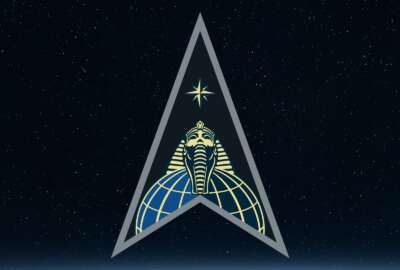NASA Establishes New Class of Astrophysics Missions, Selects Studies
NASA selects two proposals for missions to observe X-ray and far-infrared wavelengths of light from space for additional review
Starting today with NASA where two proposals for missions to observe X-ray and far-infrared wavelengths of light from space were selected by the agency for additional review. Each proposal will be studied for a year and then a concept will be selected in 2026, to hopefully launch in 2032. The resulting mission will become the first in a new class of NASA astrophysics missions within the agency’s longstanding Explorers Program. To find out more about these proposals, I got the chance to speak with Mark Clampin. He’s the director of NASA’s astrophysics division.
Interview transcript:
Mark Clampin So traditionally, the Explorers Program consisted of what we call a Mid-Class Explorer, or MIDEX, and then a Small Explorer, which we call SMEX. And the National Academies likes to see NASA astrophysics maintain a patent subduing about two of each of those a decade. So two MIDEXs and two SMEXs within a decade. They-re completed missions and they are what are called PI-led missions. So they are basically proposed by a principal investigator. And during the lifecycle of that mission, the principal investigator is responsible for every aspect of the mission, including the oversight and management of the program as it’s being developed and constructed. And then the oversight and leadership of the science program when it actually gets into space and starts doing science. Typically, we look at our MIDEX program as being a program that’s really focused on some important scientific area or problem, but which also provides a great benefit for the whole community. So some of our MIDEX, for example, would basically comprise a survey. So if you look at our most recent selection for MIDEX, the UV Explorer, it’s focused on three or four different scientific investigations, but it also provides an all-sky survey of the ultraviolet universe that will be used by the whole science community. In contrast, the Smaller Explorer is much smaller, and there we kind of look to have a very unique scientific investigation, perhaps opening up a new area that’s never been studied before. A good example is X-ray Polarimetry Mission (IXPE), which opened up for the very first time observations of X-rays through polarization so that we could really look into the physics of black holes.
Mark Clampin So the new missions that I think you’re interested in, the Probe Class Explorer, is something new this decade. So every decade, the National Academies runs a set of panels that basically asks the question, what’s the most important science to do this decade? What are the big questions in astrophysics and how would we answer them this decade? And in the 2020 decadal survey, the panel recommended the addition of a new class of mission. They call it the Probe Class Explorer, has a cost cap of around $1 billion. It’s still PI-led, so basically at the moment is the largest PI-led mission in astrophysics. And they looked at as being very similar to a program in the planetary science division called New Frontiers. So it’s pretty much a new mission class. And they basically said you should think about doing one of these a decade. They also were very specific about the science for this decade. So in 2020 to 2030, this decade, they wanted us to pick either an X-ray mission or a far infrared mission. And that’s either imaging or imaging and spectroscopy. But they really wanted us to put out an announcement of opportunity that focused on those two areas. And that’s what we’ve done.
Eric White And so that’s the present in the near future. But this being one of NASA’s oldest continuous program, can you give me a little history on some of the other classes that had been identified in the past that you’re familiar with? Obviously, I don’t think that you were involved with it back in the 50s, but I’m going to take a good guess there.
Mark Clampin When you say classes, you mean specific missions?
Eric White Yes.
Mark Clampin Some of the MIDEX missions that we’ve done in the past, for instance, we had a MIDEX called WMAP, which builds upon the work that have been done by the COBE satellite. So WMAP really mapped the universe much higher resolution to study the cosmic microwave background, the perturbations in the cosmic microwave background, and really allowed us to put an age on the universe. More recently, very interesting, MIDEX and I was actually involved in this one when I was at the Goddard Space Flight Center, is TESS. And TESS stands for the Transiting Exoplanet Survey Satellite. And Tess was designed to really answer a question, which is what nearby bright stars have small, rocky planets orbiting them. And it was really designed to go find targets for JWST, exoplanet targets where JWST could then do follow-up observations and map out the composition and the atmospheres of these planets. So Tess basically did an all-sky survey, and it basically spent a certain amount of time in each part of the sky. It was just an array of cameras, and then it moved and looks again for I can’t remember how many days, but something like 30 days. And then it would move again. So it picked up all of that short-period transiting exoplanet. And now as it’s past, it’s what we call prime mission, which was two years. It’s focusing on specific areas of the sky. And it’s also being used by what we call general investigators. So every year we have a competition and people can propose for observing time.
Mark Clampin So Tess is kind of interesting to me because it’s transitioned primarily from being a transit mission to more of a more time domain astronomy mission. So a lot of people are using it now to study supernovas or transient events in the universe. And this actually turns out to have been one of the other key recommendations of the National Academy. So, again, it started off looking for small, rocky planets, but now it provides all this additional scientific capability to the whole community, and not just for studying exoplanets, but for studying supernova and the basic things that go flash in the night. So it’s been extremely successful. So that’s a good example of two Midex’s. I mentioned for SMEX, most recent one was IXPE, which is Imaging X-ray Polarimetry, and that has been conducting observations X-rays in polarized light. Measuring the polarization of the X-rays is better way to put it, and that allows us to really understand some of the mechanisms of extreme physics going on around the cause of black holes. So IXPE is also been extremely successful in its science goals. So that gives you an example of a couple of the kinds of things that mid-class, small class are doing.
Mark Clampin Now, I will just say that in the past, NASA astrophysics has done billion dollar class missions that you could say were analogies to a probe or that we didn’t actually call them probes. So Fermi, which is a gamma-ray mission, is a good example. And Fermi has been studying the gamma-ray sky for many years now, and is currently making very important contributions to understanding again, time domain universe, things that are very transient. And I think one of the most interesting observations that Fermi did was studying pair of merging neutron stars back in 2017. They have the usual telephone number that is used for identifying these events. But this was kind of a watershed of what we call seminal observation. So this event was detected by one of the lie detectors. It was detected a few milliseconds later by Fermi. And then people were really excited by this and we’re able to go follow up first by using missions like Swift. Another Middex mission that we still have flying to get a better idea of where it was. And we eventually were able to track it down to a single observation with the Hubble Space Telescope, and then we could follow the decay of this sort of explosion caused by these two merging neutron stars. And that led to the discovery that a lot of the really heavy elements in the universe are actually produced by merging neutron stars. So that’s been a really interesting results from Fermi, but also from other missions like Swift, which was a Midex that we flew a lot awhile ago.
Eric White It’s interesting. As NASA’s role and mission in space travel has kind of shifted, as any agency would when you’re this old. Has this program remain purely exploratory just for answering those astrophysics questions? Or are these answers now being used and implemented in future NASA missions, whether they’re commercial-oriented or not?
Mark Clampin All of the observations that our missions may contribute to our understanding of how the universe works, whether it’s answering the question, are we alone? How does the universe work? How’s it evolved over time? And helps us build up a picture of what’s going on? And then we obviously ask additional questions that often lead to new missions. I think it’s fair to say that the decadal survey in the National Academies, I’ve always thought this was an important program because they have told us that we have to maintain the cadence of these missions across a decade. And of course, now they’ve added a new mission line to that explorers cohort. So they see it as very important, and that it makes extremely important discoveries. And building middle class morale and probe class missions really allows us to address some of the science problems that may be the very big missions like web address or spend more time working on a particular problem.
Eric White Yeah. And finishing up here, I’m going to ask you to get a little meta here. And I understand if this question sounds a little strange. What is the state currently of astrophysics? What is there? Obviously, everything we have when it comes to space exploration and any activity in space is due to our knowledge of astrophysics. Where are the trends going in the field, and what are the big questions we’re still looking to answer.
Mark Clampin That’s a really interesting question. So if I go back to our sort of three fundamental areas of study. One of the big questions right now we’re trying to answer is are we alone? Is there life in the universe? And coming back to the decadal d survey again, Astro 2020, as it’s called, told NASA’s astrophysics that our objective for the decade is to start building a large flagship mission that will succeed Webb and Roman. And we’re calling that the Habitable Worlds Observatory. And that mission will ultimately conduct to survey of nearby stars looking for small, rocky planets by directly imaging them, and then search their spectroscopic composition to see if there’s evidence of life on those planets. So that’s the big question that the decade or survey gave us. If I look at the other fields right now, we’re making lots of discoveries about how galaxies and stars formed in the universe, and the role of rapid star formation where the black holes were in a key part of building these galaxies early in the universe. So we’re starting to understand what went on there, but we have got a lot more work to do with Webb to really build up a picture. And then the other really exciting area right now is the one I mentioned: time domain. Understanding transient events in the universe, whether they be supernova or merging black holes or merging neutron stars, these extremely energetic events that are so powerful, I always say they kind of ring the universe’s bell. They kind of create these gravitational waves, which causes the universe to sort of basically just ripple for a second as these waves move out. So these really energetic events are very interesting, we don’t understand a lot about them right now. And we’re trying to build missions that will help us understand them better. And as you probably know, we just made two selections for further study for the Probe Explorers. And one of those is very focused on understanding some of these transient events.
Eric White This show, I get the opportunity to speak to folks who work in different areas in this field. And I wanted to press you on what about astrophysics, was there an underlying curiosity you always had to try to answer these tough questions? How did you find yourself in this position?
Mark Clampin I actually found myself in this position initially through the hardware side of things, actually building instruments to make these kind of discoveries. So I came in to astrophysics building very sensitive detector systems and building optical systems to search initially for what we call debris disks, the remnants of planet formation that you see around some stars. And then I got into working on space instrumentation, and I was involved in the camera for surveys. I basically oversaw the construction and the delivery of the three focal planes for that Hubble instrument. After we delivered that instrument, they started doing its first science. I was asked to join the Webb Space Telescope Program as an observatory project scientist. So I was responsible for overseeing the requirements and then the development of the telescope and the sunshield for Webb. So I’ve always been involved in the hardware side, but then thinking about how you can do new observations with new unique hardware that we haven’t had before. So study for me, my background in science is really looking for extra planets and really the search for life.
Copyright © 2025 Federal News Network. All rights reserved. This website is not intended for users located within the European Economic Area.
Eric White is news anchor and Federal Drive producer at Federal News Network.
Follow @FEDERALNEWSCAST






